Best Antibiotic for Pus: Treating and Preventing Boils Effectively
How do boils form and what causes them. Can small boils be treated at home. When should you seek medical attention for a boil. What are the most effective treatments for large or recurrent boils. How can you prevent boils from spreading or recurring.
Understanding Boils: Causes and Characteristics
Boils, also known as furuncles, are painful, pus-filled bumps that form under the skin. They are typically caused by bacteria, most commonly Staphylococcus aureus, which infects hair follicles or oil glands. Boils can appear anywhere on the body but are more likely to develop in areas with friction, moisture, or hair.
What does a boil look like? Initially, a boil appears as a small, pea-sized red or purplish bump. As it progresses, it grows larger, fills with pus, and becomes increasingly painful. The surrounding skin often becomes swollen and tender. Eventually, the boil develops a yellowish-white tip, which may burst and drain pus.
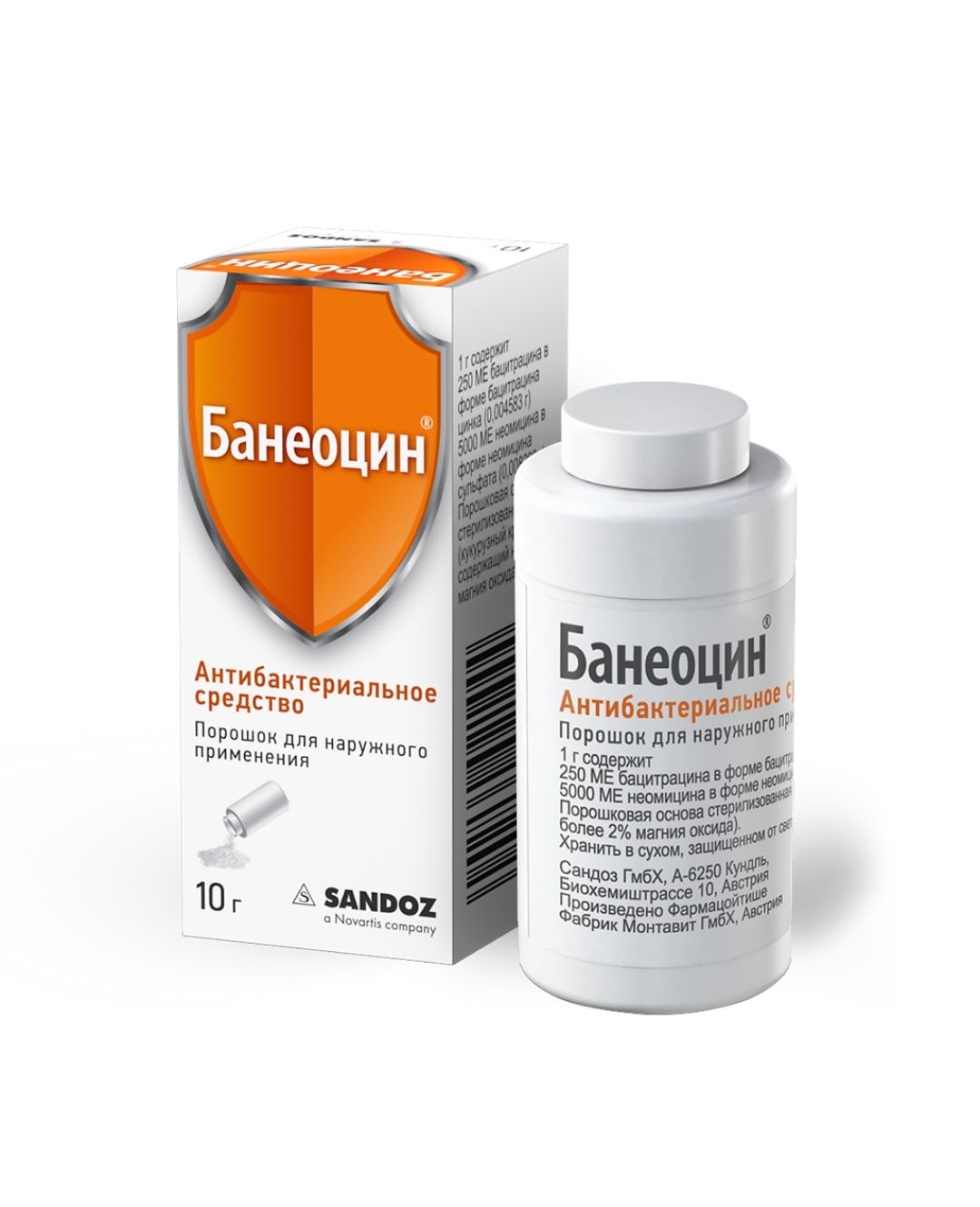
Types of Boils
- Single boil (furuncle)
- Carbuncle (a group of interconnected boils)
- Recurrent furunculosis (frequent, recurring boils)
When multiple boils form a cluster, it’s called a carbuncle. Carbuncles are more serious than individual boils and may cause fever and general malaise. Recurrent furunculosis refers to the condition where boils keep recurring more than three times a year, often in areas where skin folds.
Home Remedies for Small Boils
Can you treat a small boil at home? Yes, small boils can often be managed with simple home remedies. These treatments aim to encourage the boil to drain naturally and promote healing.
Effective Home Treatments
- Apply warm compresses: Place a warm, wet washcloth on the boil for 10-15 minutes, several times a day. This helps draw the pus to the surface and encourages drainage.
- Keep the area clean: Gently wash the area with antibacterial soap and water.
- Avoid squeezing or puncturing: Resist the urge to pop the boil, as this can spread the infection.
- Cover with a bandage: Once the boil drains naturally, cover it with a clean bandage to prevent the spread of bacteria.
- Practice good hygiene: Wash your hands thoroughly before and after treating the boil.
How long does it take for a small boil to heal with home treatment? Small boils treated at home typically heal within 2 days to 3 weeks, depending on their size and severity.

When to Seek Medical Attention for Boils
While small boils can often be managed at home, certain situations require professional medical care. Seeking timely medical attention can prevent complications and ensure proper treatment.
Signs You Should See a Doctor
- The boil is larger than 2 inches in diameter
- You have multiple boils or a carbuncle
- The boil is on your face or spine
- You have a fever or feel generally unwell
- The boil hasn’t improved after a week of home treatment
- You have recurring boils (more than three times a year)
- You have a weakened immune system or chronic medical condition
Why is it important to seek medical attention for large or recurrent boils? Large boils and carbuncles often require professional drainage and may need antibiotic treatment to prevent complications such as the spread of infection or scarring.
Medical Treatments for Severe or Recurrent Boils
When home remedies aren’t sufficient, medical interventions become necessary. Healthcare professionals have several tools at their disposal to effectively treat severe or recurrent boils.

Professional Treatment Options
- Incision and drainage: A doctor makes a small incision to drain the pus from large or stubborn boils.
- Antibiotics: Oral or topical antibiotics may be prescribed to fight the bacterial infection.
- Culture and sensitivity testing: To identify the specific bacteria causing recurrent boils and determine the most effective antibiotic.
- Decolonization: For recurrent cases, a regimen to reduce bacteria on the skin and in the nose may be recommended.
What is the best antibiotic for treating boils? The choice of antibiotic depends on the specific bacteria causing the infection, but common options include mupirocin (topical), clindamycin, or trimethoprim-sulfamethoxazole (oral). However, antibiotic selection should always be guided by a healthcare professional based on individual circumstances and local resistance patterns.
Preventing Boils and Their Spread
While it’s not always possible to prevent boils entirely, there are several measures you can take to reduce your risk and prevent their spread.

Effective Prevention Strategies
- Practice good hygiene: Wash your hands frequently and keep your skin clean.
- Avoid sharing personal items: Don’t share towels, washcloths, or razors.
- Treat cuts and scrapes promptly: Clean and cover any breaks in the skin.
- Boost your immune system: Maintain a healthy diet, exercise regularly, and manage stress.
- Keep diabetes under control: If you have diabetes, maintain good blood sugar control.
- Use antibacterial soap: Consider using an antibacterial soap if you’re prone to boils.
How can you prevent boils from spreading to others? If you have a boil, keep it covered with a clean bandage, wash your hands frequently, and avoid sharing personal items. Regularly clean and disinfect surfaces you touch, and wash your clothes and bedding in hot water.
Complications of Untreated Boils
While most boils heal without significant issues, untreated or improperly treated boils can lead to complications. Understanding these potential problems underscores the importance of proper care and timely medical attention when needed.

Potential Complications
- Scarring: Especially likely with large boils or those that require surgical drainage.
- Spread of infection: The infection can spread to deeper layers of skin or nearby areas.
- Sepsis: In rare cases, the infection can enter the bloodstream, causing a life-threatening condition.
- Recurrent infections: Improper treatment can lead to recurring boils.
- Abscess formation: A larger, more serious pocket of infection may develop.
Is sepsis a common complication of boils? No, sepsis is a rare complication of boils. However, it’s a serious condition that can occur if the infection spreads to the bloodstream, highlighting the importance of proper treatment and monitoring of boils, especially in individuals with weakened immune systems.
Differentiating Boils from Other Skin Conditions
Boils can sometimes be confused with other skin conditions. Understanding the differences can help ensure proper treatment and prevent unnecessary worry.
Conditions Often Mistaken for Boils
- Cysts: Fluid-filled sacs under the skin, usually not painful or infected.
- Acne: Smaller, less painful bumps that don’t usually contain as much pus.
- Hidradenitis suppurativa: A chronic condition causing painful, recurring bumps in areas where skin rubs together.
- Folliculitis: Inflammation of hair follicles, which can look like small boils but are typically less severe.
- Skin abscesses: Larger pockets of pus that may require medical drainage.
How does hidradenitis suppurativa differ from recurrent boils? While both conditions can cause recurring, painful bumps, hidradenitis suppurativa is a chronic inflammatory condition that typically affects specific areas like the armpits, groin, and under the breasts. It often leads to more significant scarring and requires long-term management, potentially including biologics or other advanced treatments.

Living with Recurrent Boils: Management and Support
For individuals dealing with recurrent boils, the condition can be frustrating and impact quality of life. However, with proper management and support, it’s possible to minimize occurrences and maintain overall well-being.
Strategies for Managing Recurrent Boils
- Develop a skincare routine: Use gentle, antibacterial cleansers and keep skin moisturized to maintain skin barrier function.
- Identify and avoid triggers: Keep track of potential triggers like certain foods, stress, or environmental factors.
- Consider dietary changes: Some people find that reducing dairy or high-glycemic foods helps reduce boil occurrences.
- Manage underlying conditions: If you have conditions like diabetes or a compromised immune system, work with your healthcare provider to optimize management.
- Explore long-term prevention: Discuss options like low-dose antibiotics or topical treatments with your doctor for ongoing prevention.
Can lifestyle changes help prevent recurrent boils? Yes, lifestyle modifications can play a significant role in managing recurrent boils. Maintaining good hygiene, reducing stress, eating a balanced diet, and staying hydrated can all contribute to healthier skin and a stronger immune system, potentially reducing the frequency of boil occurrences.

Living with recurrent boils can be challenging, but with proper medical care, preventive measures, and lifestyle adjustments, many people successfully manage the condition. Remember to work closely with your healthcare provider to develop a personalized management plan that addresses your specific needs and circumstances.
How to Get Rid of a Boil: Treatment and Prevention
You can get rid of a small boil with the help of home treatments, like covering the boil in a wet washcloth. Larger or recurrent boils require medical attention and medical treatment.
Bacteria like Staphylococcus aureus can cause bumps on your skin, commonly known as boils. Boils are typically red or purplish, and they can be quite painful.
Boils are usually found on a hair follicle that’s become infected, but they can occur anywhere on the body.
They tend to appear in areas that are irritated and have more sweat around the hair follicles. This combination provides the perfect atmosphere for boils.
Read on to learn how to treat boils, whether small or large.
Fast facts about boils
- Boils are also known as furuncles.
- When a boil starts out, it will be pea-sized. After a period of time, it will grow larger, fill with pus, and become more painful. The skin around the boil may also be swollen.
- The very top of the bump will eventually have a yellowish-white tip. This tip will eventually burst and begin leaking pus.
- Several boils together in a group are referred to as a carbuncle. If you have a carbuncle, you may also have a fever and not feel well in general.
You can usually treat small boils on your own at home. Small boils that can be treated at home can take anywhere from 2 days to 3 weeks to heal.
Here are a few tips for getting rid of a small boil:
- Avoid squeezing the boil or trying to drain it yourself. Doing so could lead the infection to spread or possibly cause a secondary infection of the boil.
- Place a warm, wet washcloth on the boil several times a day.
- Add some pressure by holding the washcloth in place without directly puncturing the boil.
- Once the boil ruptures naturally, keep it covered with a fresh, clean bandage or gauze. This will help keep the infection from spreading to other places.

- Wash your hands well after caring for your boil. This also helps prevent the infection from spreading.
If you have a large boil or a group of boils (carbunculosis), seek medical treatment. Only a healthcare professional can safely drain a large boil or carbuncle.
Sometimes a large boil becomes soft and won’t burst on its own. A healthcare professional can take care of this issue by carefully draining the boil.
In some cases, a doctor may prescribe antibiotics to help clear up the infection. This is especially true for face boils. They run a higher risk of complications like scarring or secondary infection.
If you have boils that keep returning more than three times in a year, you have recurrent furunculosis. Recurrent furunculosis usually spreads more easily, especially among members of the same household.
The boils of recurrent furunculosis often appear in areas where the skin folds. This includes:
- under the breasts
- under the stomach
- in the underarms
- in the groin area
Recurrent furunculosis must be treated by a doctor. Treatment options include antibiotics and surgical drainage.
Treatment options include antibiotics and surgical drainage.
Boils, even ones caused by recurrent furunculosis, usually have few complications.
The main complication is scarring.
Another complication is the possibility of recurrent furunculosis. See a doctor if you have recurrent boils in skin folds.
The development of a secondary infection isn’t as common. Secondary infection can lead to sepsis, which is the body’s reaction to bacteria in the blood. But sepsis is a very rare complication. You can avoid sepsis by getting proper treatment early.
Hidradenitis suppurativa
Hidradenitis suppurativa is a chronic condition that can resemble recurrent furunculosis. But it’s actually more serious.
Hidradenitis suppurativa can lead to scarring and worsening when it’s not recognized and treated appropriately. Possible treatment options include antibiotics and biologic drugs.
Was this helpful?
You can’t always prevent a boil from occurring. But you can prevent a boil from spreading to other parts of your body and to other people.
Follow these tips:
- Keep the boil covered with a clean bandage at all times.
- Any time you or someone else comes into contact with your boil for any reason, wash your hands thoroughly with soap and water. Clean the boil as well.
- When you have a boil, washing and keeping your clothes and bedding clean can also help prevent the spread of the infection:
- Wash your clothes and bedding in hot water. Using bleach along with the detergent can help as well.
- When drying, be sure to set your dryer to high heat.
- Regularly clean and disinfect all surfaces that you may touch. This includes doorknobs, toilet seats, bathtubs, and commonly used surfaces throughout the home.
- Avoid sharing items that come into contact with your skin, like razors, athletic equipment, and towels.
Side Effects, Dosage, Uses, and More
Mupirocin | Side Effects, Dosage, Uses, and More
- Health Conditions
- Featured
- Breast Cancer
- IBD
- Migraine
- Multiple Sclerosis (MS)
- Rheumatoid Arthritis
- Type 2 Diabetes
- Articles
- Acid Reflux
- ADHD
- Allergies
- Alzheimer’s & Dementia
- Bipolar Disorder
- Cancer
- Crohn’s Disease
- Chronic Pain
- Cold & Flu
- COPD
- Depression
- Fibromyalgia
- Heart Disease
- High Cholesterol
- HIV
- Hypertension
- IPF
- Osteoarthritis
- Psoriasis
- Skin Disorders and Care
- STDs
- Featured
- Discover
- Wellness Topics
- Nutrition
- Fitness
- Skin Care
- Sexual Health
- Women’s Health
- Mental Well-Being
- Sleep
- Product Reviews
- Vitamins & Supplements
- Sleep
- Mental Health
- Nutrition
- At-Home Testing
- CBD
- Men’s Health
- Original Series
- Fresh Food Fast
- Diagnosis Diaries
- You’re Not Alone
- Present Tense
- Video Series
- Youth in Focus
- Healthy Harvest
- No More Silence
- Future of Health
- Wellness Topics
- Plan
- Health Challenges
- Mindful Eating
- Sugar Savvy
- Move Your Body
- Gut Health
- Mood Foods
- Align Your Spine
- Find Care
- Primary Care
- Mental Health
- OB-GYN
- Dermatologists
- Neurologists
- Cardiologists
- Orthopedists
- Lifestyle Quizzes
- Weight Management
- Am I Depressed? A Quiz for Teens
- Are You a Workaholic?
- How Well Do You Sleep?
- Tools & Resources
- Health News
- Find a Diet
- Find Healthy Snacks
- Drugs A-Z
- Health A-Z
- Health Challenges
- Connect
- Breast Cancer
- Inflammatory Bowel Disease
- Psoriatic Arthritis
- Migraine
- Multiple Sclerosis
- Psoriasis
Medically reviewed by Femi Aremu, PharmD — By University of Illinois — Updated on August 23, 2021
Highlights for mupirocin
- Mupirocin topical ointment is available as a brand-name drug.
 It’s also available as a generic drug. Brand name: Centany.
It’s also available as a generic drug. Brand name: Centany. - Mupirocin comes as an ointment and as a cream you apply to your skin.
- Mupirocin topical ointment is used to treat impetigo.
- Contact warning: Be careful not to get this drug in your eyes. If it comes into contact with your eyes, rinse your eyes well with water. Don’t use this form of the drug inside your nose. It can cause stinging or drying.
- Allergic reactions warning: If you have an allergic reaction or severe irritation on your skin where you apply the ointment, stop using this drug and call your doctor. Symptoms of an allergic reaction include trouble breathing or swallowing, shortness of breath, swelling of your throat or tongue, itching, or a body rash. Your doctor may give you a different treatment for your infection.
- Length of treatment warning: Using this drug for a long time can cause microscopic organisms, such as bacteria or fungi, to overgrow.
 You should only use this drug for as long as your doctor recommends.
You should only use this drug for as long as your doctor recommends. - Antibiotic-associated diarrhea warning: Almost all antibiotics, including mupirocin, can cause diarrhea due to an infection. This infection can cause mild diarrhea or severe inflammation of your colon. Severe reactions can be fatal (cause death). Tell your doctor if you have diarrhea. If you have this infection, you’ll need to stop using mupirocin and get treatment.
Mupirocin is a prescription drug. It comes as a topical ointment and a topical cream.
Mupirocin topical ointment is available as the brand-name drug Centany. It’s also available as a generic drug. Generic drugs usually cost less than the brand-name version. In some cases, they may not be available in every strength or form as the brand-name drug.
Mupirocin topical ointment may be used as part of a combination therapy. This means you may need to use it with other medications.
Why it’s used
Mupirocin topical ointment is used to treat impetigo. This is a skin infection caused by bacteria.
This is a skin infection caused by bacteria.
How it works
Mupirocin belongs to a class of drugs called topical antibacterials. A class of drugs is a group of medications that work in a similar way. These drugs are often used to treat similar conditions.
Mupirocin works to kill the bacteria that are causing your infection. These include strains of Staphylococcus aureus and Streptococcus pyogenes. Mupirocin stops the bacteria from multiplying.
Mupirocin topical ointment doesn’t cause drowsiness, but it can cause other side effects.
More common side effects
The more common side effects of mupirocin topical ointment can include:
- burning, stinging, pain, itching, rash, redness, dryness, tenderness, or swelling of the treated skin
- nausea
- increased oozing at the infection site
If these effects are mild, they may go away within a few days or a couple of weeks. If they’re more severe or don’t go away, talk to your doctor or pharmacist.
Serious side effects
Call your doctor right away if you have serious side effects. Call 911 if your symptoms feel life-threatening or if you think you’re having a medical emergency. Serious side effects and their symptoms can include the following:
- Diarrhea that doesn’t go away. The diarrhea may be due to an infection caused by the bacteria Clostridium difficile, which is often called C. difficile or C. diff.
Disclaimer: Our goal is to provide you with the most relevant and current information. However, because drugs affect each person differently, we cannot guarantee that this information includes all possible side effects. This information is not a substitute for medical advice. Always discuss possible side effects with a healthcare professional who knows your medical history.
An interaction is when a substance changes the way a drug works. This can be harmful or prevent the drug from working well. To help prevent interactions, your doctor should manage all of your medications carefully. Be sure to tell your doctor about all medications, vitamins, or herbs you’re taking.
Be sure to tell your doctor about all medications, vitamins, or herbs you’re taking.
To find out how mupirocin topical ointment might interact with something else you’re taking, talk to your doctor or pharmacist.
Disclaimer: Our goal is to provide you with the most relevant and current information. However, because drugs interact differently in each person, we cannot guarantee that this information includes all possible interactions. This information is not a substitute for medical advice. Always speak with your healthcare professional about possible interactions with all prescription drugs, vitamins, herbs and supplements, and over-the-counter drugs that you are taking.
This drug comes with several warnings.
Allergy warning
Mupirocin can cause a severe allergic reaction. Symptoms can include:
- trouble breathing or swallowing
- shortness of breath
- swelling of your throat or tongue
- itching
- body rash
- chest tightness
- skin on your face or body that’s pale or flushed (warm and red)
- a panic attack or feeling that bad things are going to happen
If you develop these symptoms, call 911 or go to the nearest emergency room.
Don’t use this drug again if you’ve ever had an allergic reaction to it. Using it again could be fatal (cause death).
Contact with drug warning
This drug can be transferred to other people if they touch your treated skin. Talk to your doctor about what you should do to prevent this from happening. One way to prevent drug transfer is to cover the treated area with a gauze dressing.
Warnings for other groups
For pregnant women: Mupirocin is a category B pregnancy drug. That means two things:
- Studies of the drug in pregnant animals have not shown a risk to the fetus.
- There aren’t enough studies done in pregnant women to show if the drug poses a risk to the fetus.
Talk to your doctor if you’re pregnant or planning to become pregnant. This drug should be used only if the potential benefit justifies the potential risk.
For women who are breastfeeding: It’s not known whether mupirocin passes into breast milk or causes side effects in a child who is breastfed. Talk to your doctor if you breastfeed your child. You may need to decide whether to stop breastfeeding or stop using this medication.
Talk to your doctor if you breastfeed your child. You may need to decide whether to stop breastfeeding or stop using this medication.
For children: Mupirocin topical ointment hasn’t been studied in children younger than 2 months.
When to call the doctor
Call your doctor if the treated skin doesn’t look better after 3 to 5 days.
All possible dosages and drug forms may not be included here. Your dosage, drug form, and how often you use the drug will depend on:
- your age
- the condition being treated
- how severe your condition is
- other medical conditions you have
- how you react to the first dose
Drug forms and strengths
Generic: Mupirocin
- Form: topical ointment
- Strength: 2%
Brand: Centany
- Form: topical ointment
- Strength: 2%
Dosage for impetigo
Adult dosage (ages 18 years and older)
Typical dosage: A small amount of the ointment applied to the infected skin three times per day for up to 10 days.
Child dosage (ages 2 months to 17 years)
Typical dosage: A small amount of the ointment applied to the infected area of skin three times per day for up to 10 days.
Child dosage (ages 0–1 month)
This medication hasn’t been studied in children younger than 2 months of age.
Disclaimer: Our goal is to provide you with the most relevant and current information. However, because drugs affect each person differently, we cannot guarantee that this list includes all possible dosages. This information is not a substitute for medical advice. Always speak with your doctor or pharmacist about dosages that are right for you.
Mupirocin topical ointment is used for short-term treatment. It comes with serious risks if you don’t use it as prescribed.
If you stop using the drug suddenly or don’t use it at all: Your infection may not improve, and it may get worse.
If you miss doses or don’t use the drug on schedule: Your medication may not work as well or may stop working completely. The bacteria that this drug is treating may also develop resistance. This means that your medication will no longer work to kill the bacteria. For this drug to work well, a certain amount needs to be at the site of infection at all times.
The bacteria that this drug is treating may also develop resistance. This means that your medication will no longer work to kill the bacteria. For this drug to work well, a certain amount needs to be at the site of infection at all times.
If you use too much: The bacteria this drug is treating may develop resistance. This means that your medication will no longer work to kill the bacteria. If you think you’ve used too much of this drug, call your doctor.
What to do if you miss a dose: Apply your dose as soon as you remember. If you remember just a few hours before your next scheduled dose, apply only one dose.
How to tell if the drug is working: Your infection should start to get better within 3 to 5 days of using this drug.
Keep these considerations in mind if your doctor prescribes mupirocin for you.
General
- Apply the drug three times per day, about every 8 hours.
- Only apply this drug to your skin.
 Do not use the topical ointment in your nose.
Do not use the topical ointment in your nose.
Storage
- Store mupirocin topical ointment at room temperature. Keep it between 68°F and 77°F (20°C and 25°C). Don’t freeze it.
- Don’t store this medication in moist or damp areas, such as bathrooms.
Travel
When traveling with your medication:
- Always carry your medication with you. When flying, never put it into a checked bag. Keep it in your carry-on bag.
- Don’t worry about airport X-ray machines. They can’t harm your medication.
- You may need to show airport staff the pharmacy label for your medication. Always carry the original prescription-labeled container with you.
- Don’t put this medication in your car’s glove compartment or leave it in the car. Be sure to avoid doing this when the weather is very hot or very cold.
Availability
Not every pharmacy stocks this drug. When filling your prescription, be sure to call ahead to make sure your pharmacy carries it.
Hidden costs
You may need to buy gauze dressings to cover the area where you applied the mupirocin ointment.
Prior authorization
Many insurance companies require a prior authorization for this drug. This means your doctor may need to get approval from your insurance company before your insurance company will pay for the prescription.
There are other drugs available to treat your condition. Some may be better suited for you than others. Talk to your doctor about other drug options that may work for you.
Disclaimer: Healthline has made every effort to make certain that all information is factually correct, comprehensive, and up to date. However, this article should not be used as a substitute for the knowledge and expertise of a licensed healthcare professional. You should always consult your doctor or another healthcare professional before taking any medication. The drug information contained herein is subject to change and is not intended to cover all possible uses, directions, precautions, warnings, drug interactions, allergic reactions, or adverse effects. The absence of warnings or other information for a given drug does not indicate that the drug or drug combination is safe, effective, or appropriate for all patients or all specific uses.
The absence of warnings or other information for a given drug does not indicate that the drug or drug combination is safe, effective, or appropriate for all patients or all specific uses.
Last medically reviewed on August 23, 2021
How we reviewed this article:
Healthline has strict sourcing guidelines and relies on peer-reviewed studies, academic research institutions, and medical associations. We avoid using tertiary references. You can learn more about how we ensure our content is accurate and current by reading our editorial policy.
- Mupirocin — mupirocin ointment. (2019).
dailymed.nlm.nih.gov/dailymed/drugInfo.cfm?setid=ff7428fb-9ce9-4743-b58c-01a05424a57a - Centany — mupirocin ointment. (2017).
dailymed.nlm.nih.gov/dailymed/drugInfo.cfm?setid=90cfa2dc-3904-4bd3-b951-dcdb141883bf
Our experts continually monitor the health and wellness space, and we update our articles when new information becomes available.
Current Version
Aug 23, 2021
Medically Reviewed By
Femi Aremu, PharmD
Mar 16, 2018
Written By
University of Illinois-Chicago
Edited By
Yvette Brazier
Copy Edited By
Kim Shaw
VIEW ALL HISTORY
Share this article
Medically reviewed by Femi Aremu, PharmD — By University of Illinois — Updated on August 23, 2021
related stories
Can You Drink Alcohol While Taking Doxycycline?
How Do Antibiotics Work?
What Happens When Bacteria Become Resistant to Antibiotics
New Drug Candidate May Be Effective Against 300 Drug-Resistant Bacteria
Does Your Child Really Need that Antibiotic? What Parents Should Know
Read this next
- Can You Drink Alcohol While Taking Doxycycline?
Medically reviewed by Femi Aremu, PharmD
Should you drink alcohol while taking the popular antibiotic doxycycline? What will happen if you do? Get answers to these and other questions about…
READ MORE
- How Do Antibiotics Work?
Medically reviewed by Alan Carter, Pharm.
 D.
D.Antibiotics are powerful, lifesaving medications used to fight infections caused by bacteria. Learn more here.
READ MORE
- What Happens When Bacteria Become Resistant to Antibiotics
Antibiotic resistance refers to bacteria that are no longer contained or killed by antibiotics. We explain why this is a problem and what we can do…
READ MORE
- New Drug Candidate May Be Effective Against 300 Drug-Resistant Bacteria
In a study involving mice, researchers say a modified compound known as fabimycin appeared effective against 300 drug-resistant bacteria
READ MORE
- Does Your Child Really Need that Antibiotic? What Parents Should Know
Researchers say a high percentage of children are prescribed antibiotics they don’t need. Experts provide parents with some advice.
READ MORE
- Do Antibiotics Help Pancreatitis or Cause It?
Antibiotics can both cause infections that may lead to pancreatitis, but they are also used in their treatment.
 Let’s discuss the details.
Let’s discuss the details.READ MORE
- Understanding the Relationship Between Antibiotics and Bacteria
Medically reviewed by Alana Biggers, M.D., MPH
Antibiotic resistance happens when bacteria develop genetic mutations that allow them to survive an antibiotic. Here is a look at how this happens and…
READ MORE
Antibiotic Use Midlife May Lead to Cognitive Decline in WomenREAD MORE
- Ingredients in Toothpaste, Mouthwash May Be Creating Antibiotic Resistant Germs
Researchers say the amount of triclosan in household products is producing a significant increase in resistant bacteria.
READ MORE
- Antibiotics Can Kill Healthy Gut Bacteria: Here’s What to Eat to Counter That
Experts say some antibiotics can kill healthy gut bacteria. They recommend people eat yogurt and other fermented foods while taking the medications.
READ MORE
Top 15 antibiotics for sinusitis: proven and effective drugs
Contents
- 1 Top 15 antibiotics for sinusitis: effective treatment and quick recovery
- 1.
 1 Sinusitis: what is it and how to treat it?
1 Sinusitis: what is it and how to treat it? - 1.2 Why are antibiotics needed to treat sinusitis?
- 1.3 Symptoms that indicate the need for antibiotics for sinusitis
- 1.4 Choosing the right antibiotic for sinusitis
- 1.5 Popular groups of antibiotics for the treatment of sinusitis
- 1.6 Amoxicillin: features of use and efficacy
- 1.7 Azithromycin: features of the use and efficacy
- 1.8 Cefotaxime: features of use and efficacy
- 1.8.1 Description of the drug
- 1.8.2 Application and dosage
- 1.8.3 Indications for use
- 1.8.4 Side effects
- 1.8.5 Advantages and disadvantages
- 1.8.6 Conclusion
- 1.9 Features and effectiveness of the antibiotic Clarithromycin in the treatment of sinusitis
- 1.9.1 Clarithromycin – description and classification
- 1.9.2 How to use Clarithromycin in the treatment of sinusitis
- 1.9.3 Efficacy Clarithromycin for sinusitis
- 1.
 9.4 Side effects Clarithromycin
9.4 Side effects Clarithromycin
- 1.10 Cefuroxime: application features and efficacy
- 1.11 Levofloxacin: application features and efficacy
- 1.11.1 Product description
- 1.11.2 Indications for use
- 1.11.3 Methods of administration
- 1.11.4 Side effects and contraindications
- 1.11.5 Conclusion
- 1.12 Moxifloxacin: effectiveness and features of use in treatment sinusitis
- 1.13 Cefpodoxime: features of use and effectiveness
- 1.13.1 What is cefpodoxime and where is it used?
- 1.13.2 How to use cefpodoxime?
- 1.13.3 What are the side effects of cefpodoxime?
- 1.13.4 How effective is cefpodoxime in the treatment of sinusitis?
- 1.14 Flemoxin Solutab: application features and efficacy
- 1.15 Augmentin: application features and efficacy
- 1.15.1 What is Augmentin and how does it work treatment of sinusitis
- 1.
 15.3 Recommendations Directions for use and contraindications
15.3 Recommendations Directions for use and contraindications - 1.15.4 Potential side effects
- 1.16 Related videos:
- 1.17 Q&A:
- 1.17.0.1 What symptoms of sinusitis can be treated with antibiotics?
- 1.17.0.2 Which antibiotics are most effective for treating sinusitis?
- 1.17.0.3 Can antibiotics cause side effects?
- 1.17.0.4 How long should antibiotics be taken for sinusitis?
- 1.17.0.5 Can I skip a dose of antibiotics for sinusitis?
- 1.17.0.6 Can antibiotics help with chronic sinusitis?
- 1.17.0.7 Can pregnant women take antibiotics for sinusitis?
- 1.17.0.8 Can sinusitis be treated without antibiotics?
- 1.
Check out the 15 most effective antibiotics that help with sinusitis. Learn which medications to use depending on the type of disease and how to take antibiotics correctly for best results.
Sinusitis is an inflammation of the mucous membrane of the paranasal sinuses. This is a common condition that can cause severe headache, greenish or yellow mucus, vision problems, and bad breath. Most often, sinusitis is treated with antibiotics, which kill the bacteria that cause the disease.
This is a common condition that can cause severe headache, greenish or yellow mucus, vision problems, and bad breath. Most often, sinusitis is treated with antibiotics, which kill the bacteria that cause the disease.
In this article, we have collected 15 proven and effective antibiotics for the treatment of sinusitis. The drugs listed below can be trusted, as they really help in the fight against the disease.
In order to get the most effective result, it is necessary to choose the right drug and follow the instructions for its use. To make sure that you have chosen the right medicine for the treatment of sinusitis, be sure to consult with your doctor.
Sinusitis: what is it and how to treat it?
Sinusitis is an inflammatory process in the area of the paranasal sinuses. This disease is often observed in the autumn-winter period and occurs as a result of infection entering the nasal passages and sinuses. Sinusitis symptoms can include headache, nasal pain, nasal secretions, fever, and fatigue.
The most effective antibiotics for the treatment of sinusitis are amoxicillin, ampicillin, ceftriaxone, levofloxacin, etc. Treatment should be carried out under the supervision of a physician and only for the recommended period of time. Sometimes treatment can last up to 20 days. It is important to understand that self-medication with antibiotics can lead to negative health outcomes, such as allergic reactions to medications or the development of severe antibiotic resistance.
- Sinusitis is an acute or chronic inflammation of the paranasal sinuses.
- Symptoms of sinusitis may include headache, nasal pain, nasal secretions, fever.
- Treatment of sinusitis is carried out with antibiotics and drugs that reduce tissue swelling and eliminate plaque on the mucous membrane of the sinuses.
- The most effective antibiotics for the treatment of sinusitis are amoxicillin, ampicillin, ceftriaxone, levofloxacin, etc.
- Treatment of sinusitis should be carried out under medical supervision and only for the recommended period of time.

Why are antibiotics needed to treat sinusitis?
Sinusitis is a serious disease that occurs as a result of inflammation of the mucous membrane of the paranasal sinuses. If left untreated, sinusitis can lead to long-term complications, including meningitis and brain abscess.
However, it should be remembered that the misuse of antibiotics can increase the risk of drug resistance and reduce their effectiveness. Therefore, it is necessary to strictly follow the doctor’s recommendations on the dosage and duration of antibiotics.
Symptoms that indicate the need for antibiotics for sinusitis
Sinusitis – inflammation of the mucous membrane of the maxillary sinus, which can manifest itself with various symptoms:
- Pain in the eyes, forehead, nose;
- Headache aggravated by tilting or turning the head;
- Nasal obstruction which may lead to difficulty breathing through the nose;
- Nasal discomfort , accompanied by frequent changes in head position in search of a comfortable position;
- High body temperature accompanied by general malaise;
- Sharp pains when bending the head or when coughing.

If you have symptoms of sinusitis, including high body temperature, be sure to visit a doctor. Only a doctor can prescribe the correct treatment, including the use of antibiotics, if necessary.
Choosing the right antibiotic for sinusitis
Sinusitis is a condition characterized by inflammation of the sinuses of the face, especially the forehead, nose and cheeks. This disease can be caused by an infection of bacterial origin, further treatment of which includes taking antibiotics. However, how to choose the right antibiotic for the treatment of sinusitis?
If testing is not possible for some reasons, conventional treatment, which includes antibiotics, is applicable. Despite this, the choice of antibiotic should be made with caution and on the basis of symptoms. A doctor may recommend some antibiotics that are widely used in the treatment of sinusitis, but the final choice may depend on the individual case.
- Amoxicillin is one of the commonly prescribed drugs for the treatment of sinusitis.
 This antibiotic belongs to the class of penicillins and is able to destroy bacteria, which leads to an improvement in the patient’s condition.
This antibiotic belongs to the class of penicillins and is able to destroy bacteria, which leads to an improvement in the patient’s condition. - Clarithromycin is a macrolide antibiotic that can be used to treat sinusitis. It has an active effect on many bacteria and can be used in cases where amoxicillin has not worked.
- Azithromycin is also a macrolide antibiotic that can be used to treat sinusitis. This drug is stronger than clarithromycin and may be effective in more severe cases.
Avoid self-medication and choose an antibiotic only after consulting your doctor. Uncontrolled use of antibiotics can lead to serious consequences and poor health.
Popular groups of antibiotics for the treatment of sinusitis
Sinusitis is an infectious disease that causes inflammation of the paranasal sinuses. For effective treatment of sinusitis, it is necessary to determine the correct drug that has a wide spectrum of action on pathogenic microflora.
There are several groups of antibiotics that can help cure sinusitis. The first group includes penicillins, which are a widely used drug in the treatment of this disease. Also popular is the drug Flemoklav Solutab, which contains amoxicillin and clavulanic acid.
The second group of antibiotics is cephalosporins, which treat purulent sinusitis and maintain a favorable symbiosis of oral microflora. Often used drug Ceftriaxone, which is intended for injection.
The third group – macrolides, which have a variety of effects and are recommended for the treatment of various types of sinusitis. This group of drugs includes Azithromycin, Clarithromycin and Roxithromycin.
Tetracyclines, quinolones, and other antibiotics may also be used to treat sinusitis. When choosing a specific drug, it is necessary to take into account the individual characteristics of the organism and the degree of development of the disease.
List of popular antibiotics for the treatment of sinusitis: Drug name Active ingredient
| Flemoklav Solutab | amoxicillin, clavulanic acid |
| Ceftriac sleep | ceftriaxone |
| azithromycin | azithromycin |
| clarithromycin | clarithromycin |
| Roxithromycin | Roxithromycin |
Amoxicillin: features of use and effectiveness
Amoxicillin is one of the most popular antibiotics, which is widely used to treat sinusitis. This drug belongs to the penicillin group and is an effective remedy against infections caused by bacteria.
This drug belongs to the penicillin group and is an effective remedy against infections caused by bacteria.
Amoxicillin is often used in the treatment of upper respiratory diseases, including sinusitis. The drug can be prescribed in the form of tablets, capsules, liquid form or in the form of injections. This antibiotic is usually taken for 7-10 days depending on the severity of the disease.
Amoxicillin may cause some side effects including diarrhea, nausea, vomiting and allergic reactions. Before starting a course of treatment, you should consult with your doctor and read the instructions for using the drug.
Despite the side effects, amoxicillin is one of the most effective antibiotics for treating sinusitis. This drug is usually well tolerated and acts quickly, which allows you to get a quick and high-quality result in the treatment of infections.
Azithromycin: features and effectiveness
Azithromycin is one of the most effective antibiotics for the treatment of sinusitis.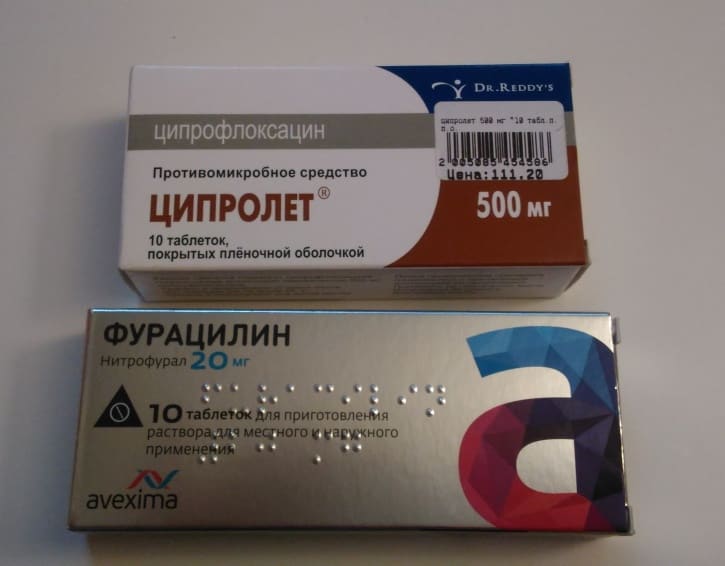 It belongs to a class of macrolide antibiotics that act against most bacteria that cause upper respiratory tract infections, including sinusitis.
It belongs to a class of macrolide antibiotics that act against most bacteria that cause upper respiratory tract infections, including sinusitis.
One of the main advantages of azithromycin is its rapid action – it begins to act within 2-3 hours after administration. Most patients report a significant improvement after the first day of therapy.
The dosage of azithromycin for the treatment of sinusitis depends on the age and weight of the patient, as well as the severity of the disease. Usually, a course is prescribed for 3-5 days, after which the patient’s condition is assessed by the doctor and a decision is made to continue or stop treatment.
- Benefits
- Fast acting
- Broad spectrum
- Minimal side effects
- Drawbacks
- Should not be taken if allergic to azithromycin or other macrolide antibiotics
- Not recommended for patients with liver or kidney disease
- May cause diarrhea, nausea and other unpleasant side effects in some cases
In general, azithromycin is an effective and safe antibiotic for the treatment of sinusitis. However, like any other drug, its appointment should be carried out only by a qualified doctor and after the necessary diagnostic procedures.
However, like any other drug, its appointment should be carried out only by a qualified doctor and after the necessary diagnostic procedures.
Cefotaxime: features of use and effectiveness
Product description
Cefotaxime is an antibiotic that belongs to the group of third-generation cephalosporins. It is prescribed to treat infections caused by bacteria that do not usually respond to other types of antibiotics.
Usage and dosage
Cefotaxime can be taken intravenously or intramuscularly. The dosage depends on the type of infection, the severity of its manifestation, as well as the age and condition of the patient. The doctor must determine the dose and duration of treatment.
Indications
Cefotaxime is indicated for the treatment of a variety of infections, including acute and chronic respiratory tract infections, urinary tract infections, skin and soft tissue infections, septic conditions, and other bacterial infections.
Side effects
Like other antibiotics, cefotaxime may cause side effects such as allergic reactions, diarrhoea, nausea, vomiting, headache, fever and tremors.
Advantages and disadvantages
Cefotaxime is considered one of the most effective antibiotics for treating bacterial infections. However, its use may be accompanied by risks of side effects and the development of resistance.
Conclusion
Doctors prescribe cefotaxime to treat severe bacterial infections that do not respond to other types of antibiotics. But, before taking this drug, it is necessary to consult a doctor and evaluate the benefits of contraindications.
Features of the use and efficacy of the antibiotic Clarithromycin in the treatment of sinusitis
Clarithromycin – description and classification
Clarithromycin belongs to macrolide antibiotics and is a semi-synthetic derivative of erythromycin. The drug has a bacteriostatic effect due to its ability to inhibit protein synthesis in bacterial cells.
Clarithromycin is a widely used antibiotic used to treat a wide range of infections, including sinusitis.
How to use Clarithromycin for sinusitis
The dosage of Clarithromycin depends on the severity of the disease, the age and weight of the patient.
The usual dose for adults and children over 12 years of age is 500 mg Clarithromycin daily for 7-14 days. For children aged 6 months to 12 years, the dosage is calculated based on weight.
Clarithromycin should be taken once a day, 1-2 hours before or 2 hours after a meal, with plenty of water.
Efficacy of Clarithromycin in sinusitis
Clarithromycin has proven efficacy in the treatment of sinusitis. It helps eliminate inflammation and reduce the symptoms of the disease.
The drug acts on various types of bacteria, including pneumococci, Haemophilus influenzae, streptococci and staphylococci, making it a versatile treatment for upper respiratory tract infections.
Side effects of Clarithromycin
As with any antibiotic, Clarithromycin may cause some side effects.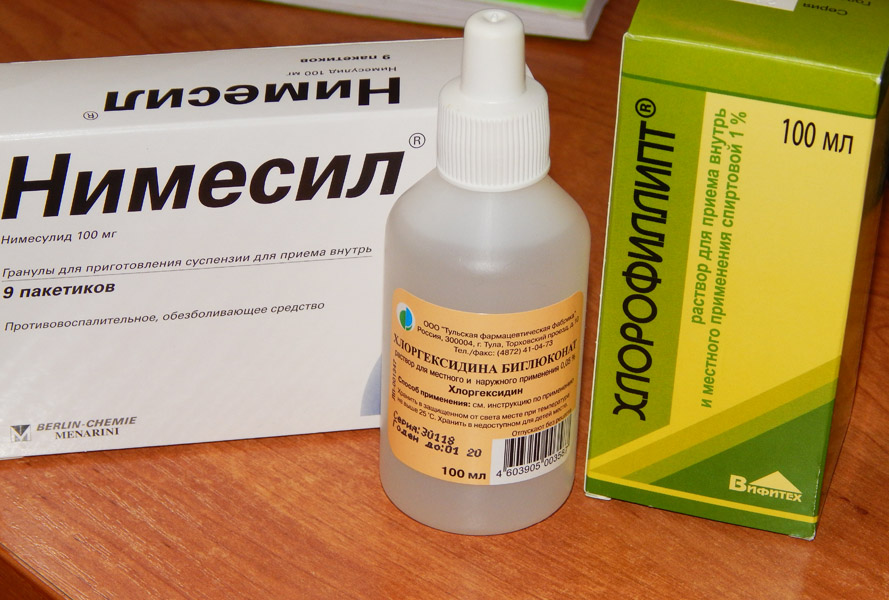 Among them may be nausea, vomiting, diarrhea, headache, fever.
Among them may be nausea, vomiting, diarrhea, headache, fever.
If you experience any side effects, contact your doctor immediately.
Cefuroxime: features of use and efficacy
Cefuroxime is an antibiotic from the group of cephalosporins of the third generation. This drug effectively fights bacteria that cause sinusitis, including Streptococcus pneumoniae, Haemophilus influenzae and Moraxella catarrhalis.
Cefuroxime has a broader spectrum of activity than many other antibiotics and usually does not cause serious side effects. However, like all antibiotics, the drug should be taken strictly according to the doctor’s prescription and at the recommended dose.
Cefuroxime is marketed under various trade names including Zinacef, Cefurax and Cefurabol. The dosage usually depends on the type of infection and the condition of the patient. On average, cefuroxime is taken for 7-10 days, but the treatment period may vary depending on the individual characteristics of the patient.
Cefuroxime is a powerful and effective drug used to treat sinusitis. It may be more effective than other antibiotics and usually does not cause serious side effects. When used correctly, this drug can quickly relieve the symptoms of sinusitis and speed up the healing process.
Levofloxacin: features and effectiveness
Product description
Levofloxacin is an antibiotic used to treat various bacterial infections, including sinusitis. The drug belongs to the group of fluoroquinolones and acts by blocking the work of enzymes in bacterial cells, which leads to their death.
Indications for use
Levofloxacin is used to treat acute and chronic sinusitis. The drug is effective against many types of bacteria that can cause sinusitis. However, before starting treatment, it is necessary to pass tests for sensitivity to the drug.
Directions for use
Levofloxacin is available as tablets, drops and injections. For the treatment of sinusitis, the drug is most often prescribed in tablets. The dosage and duration of treatment depend on the form and severity of the infection, as well as on the age and condition of the patient.
The dosage and duration of treatment depend on the form and severity of the infection, as well as on the age and condition of the patient.
Side effects and contraindications
Like all antibiotics, levofloxacin can cause some side effects, including nausea, vomiting, diarrhea, headache, and others. Some patients may also experience allergic reactions to the drug.
Levofloxacin is contraindicated in pregnant women, lactating women and children under 18 years of age. Also, the drug is not recommended in the presence of an allergy to fluoroquinolones, serious disorders of the liver and kidneys.
Conclusion
Levofloxacin is an effective antibiotic for the treatment of sinusitis. However, the use of the drug should be carried out only as directed by a doctor, strictly following the instructions for use.
Moxifloxacin: efficacy and features of use in the treatment of sinusitis
Moxifloxacin is a fluoroquinolone antibiotic that has been successfully used in the treatment of sinusitis. Its effectiveness is due to its ability to kill bacteria that cause sinusitis, such as Streptococcus pneumoniae, Staphylococcus aureus and Haemophilus influenzae. At the same time, moxifloxacin acts quickly with fewer side effects compared to other antibiotics.
Its effectiveness is due to its ability to kill bacteria that cause sinusitis, such as Streptococcus pneumoniae, Staphylococcus aureus and Haemophilus influenzae. At the same time, moxifloxacin acts quickly with fewer side effects compared to other antibiotics.
For the treatment of sinusitis, a course of moxifloxacin is usually given for 7 to 14 days. For adults, it is usually recommended to start with 400 mg per day divided into two 200 mg doses. If necessary, the dose can be increased up to 800 mg per day, and you should consult with your doctor.
Some side effects may occur with moxifloxacin, including headache, nausea, diarrhea and dry mouth. In rare cases, serious side effects may develop, such as allergic reactions and tendon problems.
In general, moxifloxacin is an effective antibiotic for the treatment of sinusitis, but as with all antibiotics, instructions for use must be followed strictly and not overused.
Cefpodoxime: application features and efficacy
What is cefpodoxime and where is it used?
Cefpodoxime (or doximax) is an antibiotic that belongs to the group of third-generation cephalosporins. It is used to treat various infections, including sinusitis. It is one of the most effective antibiotics in the treatment of bacterial infections.
It is used to treat various infections, including sinusitis. It is one of the most effective antibiotics in the treatment of bacterial infections.
How to use cefpodoxime?
Cefpodoxime can be taken by mouth as tablets or capsules, or given intramuscularly or intravenously. The dosage is determined by the doctor depending on the type of infection and its severity, as well as the age and weight of the patient.
What are the side effects of cefpodoxime?
In some cases, the use of cefpodoxime may cause side effects such as nausea, vomiting, diarrhea, abdominal pain, dyspepsia, headache, increased fatigue and others. If you experience any side effects, you should consult your doctor.
How effective is cefpodoxime in the treatment of sinusitis?
Cefpodoxime is one of the effective antibiotics in the treatment of sinusitis. This is due to a wide range of lethal effects on the most common pathogens of bacterial infections. It should be remembered that the use of antibiotics should be agreed with the doctor.
Flemoxin Solutab: features of use and effectiveness
Flemoxin Solutab is an antibiotic that is widely used to treat various bacterial infections, including sinusitis. This drug is a semi-synthetic penicillin that kills bacteria by blocking the synthesis of their cell wall.
Flemoxin Solutab is made in the form of tablets that dissolve in the mouth. They are convenient to use and do not require food intake. Usually the drug is taken at a dose of 500 mg twice a day for 7-10 days.
This antibiotic is well tolerated by most patients and is highly effective against bacterial infections, including sinusitis. However, before starting treatment with Flemoxin Solutab, it is necessary to consult a doctor and undergo drug sensitivity tests.
Do not take Flemoxin Solutab without consulting your doctor and exceed the recommended dose. Higher doses may lead to side effects including allergic reactions and gastrointestinal disturbances. It is also necessary to avoid taking Flemoxin Solutab during pregnancy and breastfeeding without consulting a doctor.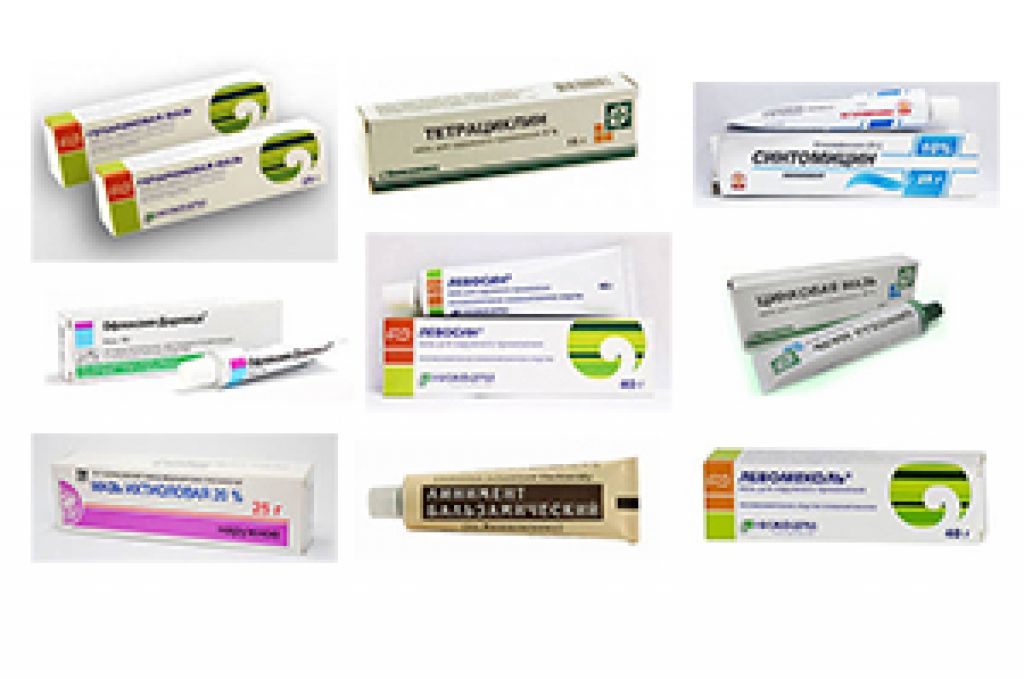
Augmentin: features and effectiveness
What is Augmentin and how does it work
Augmentin is an antibiotic used to treat infections, including sinusitis. It contains two active ingredients: amoxicillin and clavulanic acid, which act in combination, which makes the drug more effective in fighting bacterial infections.
How to take Augmentin for the treatment of sinusitis
The dosage of Augmentin may vary depending on the age, weight of the patient and the severity of the infection. Augmentin should be taken exactly as prescribed by the doctor. Usually, adults are prescribed 625 mg of Augmentin three times a day for 7-10 days. For children, the dose is determined by the doctor separately, depending on weight and age.
Directions for use and contraindications
The drug should be taken before meals or after 2 hours. after meals for better absorption. Augmentin is prohibited for use in patients with allergies to amoxicillin or clavulanic acid, as well as in case of allergic reactions to other penicillin antibiotics.
Potential side effects
Like any antibiotic, Augmentin may cause some side effects such as diarrhea, nausea, vomiting, headache, rarely skin rash and allergic reactions. If the patient experiences side effects of the drug, you should immediately consult a doctor.
Related videos:
Q&A:
Which symptoms of sinusitis can be treated with antibiotics?
Antibiotics help treat the most common symptoms of sinusitis such as head and face pain, nasal congestion, yellowish discharge from the nose, etc.
Which antibiotics are most effective for treating sinusitis?
There are many antibiotics that can be used to treat sinusitis, but some of the best options include Amoxicillin, Azithromycin, Doxycycline, Clarithromycin, Levofloxacin, Moxifloxacin, and others.
Can antibiotics cause side effects?
Yes, antibiotics can cause side effects such as nausea, vomiting, diarrhea, skin rashes, etc. If you experience any unpleasant symptoms while taking antibiotics, see your doctor.
How long should antibiotics be taken for sinusitis?
The duration of antibiotic treatment may depend on the specific drug and the severity of the disease. Usually the course lasts from 7 to 14 days. It is important to be discharged when all instructions for the duration of medications have been given.
Can I skip a dose of antibiotics for sinusitis?
Missing a dose of antibiotics may adversely affect the effectiveness of treatment. If you miss a dose, you should take it as soon as possible. If it is time for the next dose, the missed dose should be skipped and the usual dose taken from the next time.
Can antibiotics help with chronic sinusitis?
Antibiotics may be used to treat chronic sinusitis if it is caused by a bacterial infection. However, in chronic sinusitis, the causes may be more complex and more complex medical procedures may be of great importance.
However, in chronic sinusitis, the causes may be more complex and more complex medical procedures may be of great importance.
Can pregnant women take antibiotics for sinusitis?
Some antibiotics may be used for sinusitis in pregnant women under close medical supervision. However, many antibiotics can be harmful to a developing fetus, so close monitoring and specific prescription of a specific dosage should be kept.
Can sinusitis be treated without antibiotics?
In some cases, sinusitis may be caused by a viral infection and antibiotics will not be effective. In this case, treatment should be aimed at eliminating symptoms, such as pain in the head and face, washing the nose and using additional products aimed at moisturizing the mucous membranes, as well as recommendations to strengthen the immune system.
Antibiotics for angina for adults and children without prescription
Publication date: 11/18/2022
THERE ARE CONTRAINDICATIONS.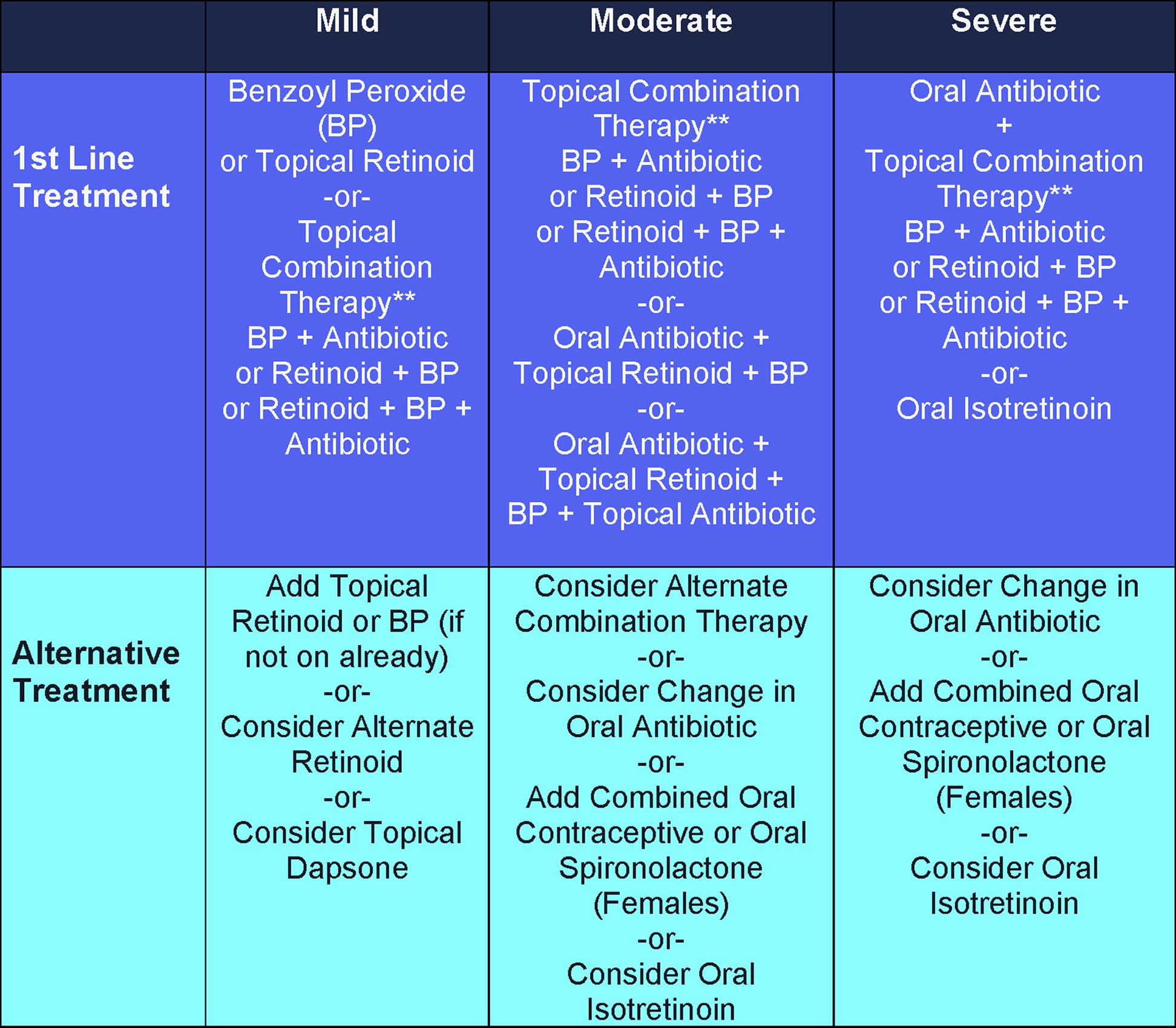 POSSIBLE SIDE EFFECTS. A SPECIALIST’S CONSULTATION IS REQUIRED. Antibiotics in capsules Antibiotics in tablets Sore throat
POSSIBLE SIDE EFFECTS. A SPECIALIST’S CONSULTATION IS REQUIRED. Antibiotics in capsules Antibiotics in tablets Sore throat
Author of the article
Sumenkova Anna Mikhailovna,
pharmacist
All authors
Contents of the article
90 500
associated with inflammation of the mucous membrane and lymphatic structures of the oropharynx. Inflammation is localized on the tonsils and on the back of the pharynx.
Everyone at least once faced with pain when swallowing and stuffy throat. These are the main symptoms of tonsillitis (tonsillitis). According to statistics, every year general practitioners and pediatricians carry out up to 15 million consultations in connection with such a complaint.
These are the main symptoms of tonsillitis (tonsillitis). According to statistics, every year general practitioners and pediatricians carry out up to 15 million consultations in connection with such a complaint.
There are main forms: catarrhal (the mildest form), lacunar (the most severe), follicular.
The most common pathogens are respiratory viruses and bacterial pathogens (group A beta-hemolytic streptococcus).
Pharmacist Anna Sumenkova will talk about the methods of treating tonsillitis.
Tablets
Recommended antibacterial drugs for the treatment of acute tonsillitis.
Antibiotics for angina: preparations of the penicillin series. The mechanism of action of antibacterial agents is based on the bactericidal effect (destruction of the pathogen).
Drug list:
Amoxiclav, Ecoclave, Flemoklav Solutab, Augmentin .
If the patient is allergic to this active ingredient, the doctor prescribes cephalosporin drugs – Suprax, Pancef, Cefixime.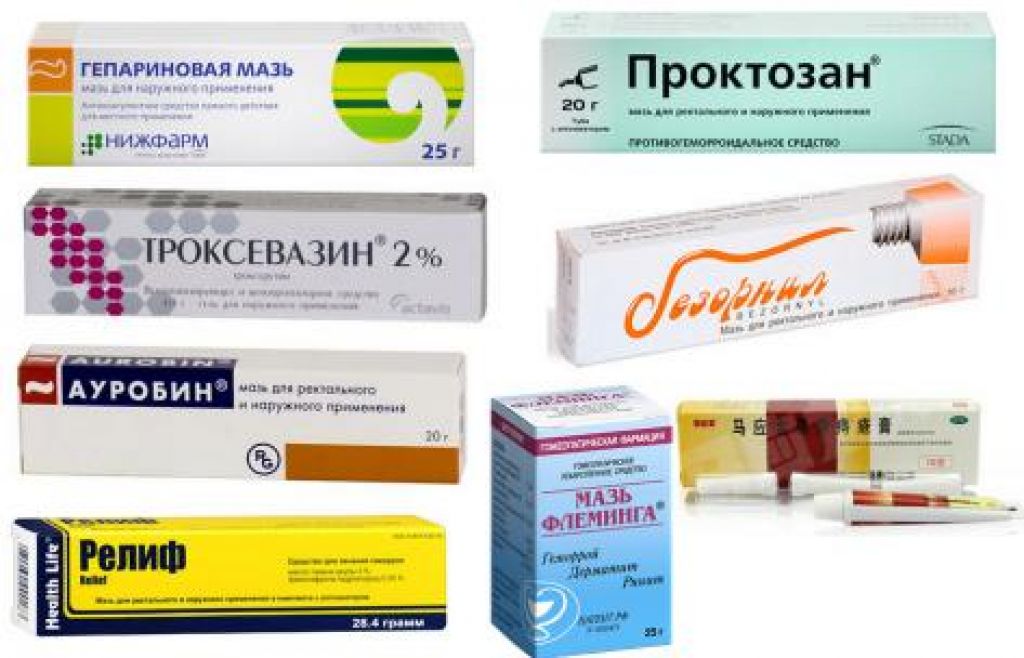
Also prescribed antibiotic treatment Azithromycin, Sumamed, Clarithromycin . The drugs belong to the group of macrolides. Their mechanism of action is based on bacteriostatic action (suppression of protein synthesis of microbial cells).
All products Amoxiclav
17 reviews
All products Augmentin
20 reviews
All products Flemoklav Solutab
20 reviews
All products Ecoclave
6 reviews
How many days to take antibiotics for angina
9000 2 Duration of admission is 10 days. Rapid treatment – the drug Azithromycin is taken in a course of 5 days. The course of taking and dosage of drugs is selected by the attending physician.
All items Suprax
20 reviews
All items Sumamed
20 reviews
All items Pantsef
20 reviews
All products Azithromycin
21 reviews
All products Clarithromycin
20 reviews
For children
Antibiotics for angina in children are prescribed only in case of an antibacterial infection. Recommend symptomatic therapy with drugs Ibuprofen and Paracetamol . To relieve pain in the throat, sprays Hexoral, Hexaspray, Tantum Verde are prescribed. Preparations can be used from 3 years.
Recommend symptomatic therapy with drugs Ibuprofen and Paracetamol . To relieve pain in the throat, sprays Hexoral, Hexaspray, Tantum Verde are prescribed. Preparations can be used from 3 years.
Is it possible to cure angina without antibiotics
In the case when the disease is caused by viral or fungal pathogens, it makes no sense to treat angina with antibiotics.
A wide range of products for the symptomatic treatment of angina is currently on the market: medicines for rinsing, inhalation, lozenges, sprays for sore throats.
Without a prescription
You can buy medicines without a prescription in a pharmacy to eliminate the unpleasant symptoms of a sore throat. Sprays, solutions and tablets for sore throats, antipyretics and painkillers.
It is important to remember that only a doctor can prescribe an antibiotic.
Summary
- Acute tonsillopharyngitis or tonsillitis is an acute infection associated with inflammation of the mucous membrane and lymphatic structures of the oropharynx.




 It’s also available as a generic drug. Brand name: Centany.
It’s also available as a generic drug. Brand name: Centany.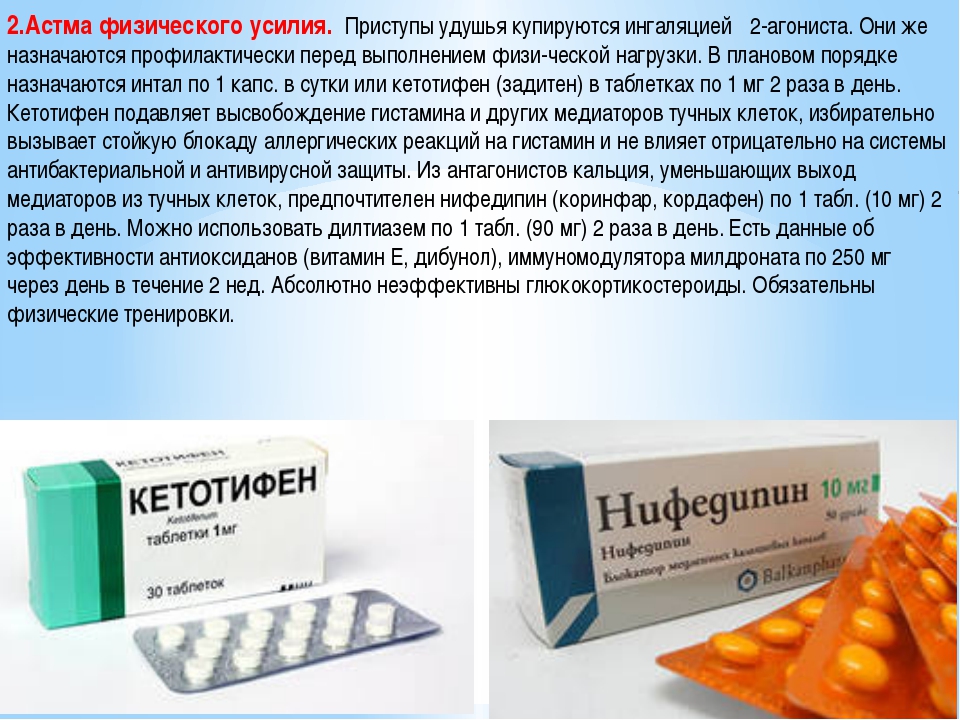 You should only use this drug for as long as your doctor recommends.
You should only use this drug for as long as your doctor recommends. Do not use the topical ointment in your nose.
Do not use the topical ointment in your nose.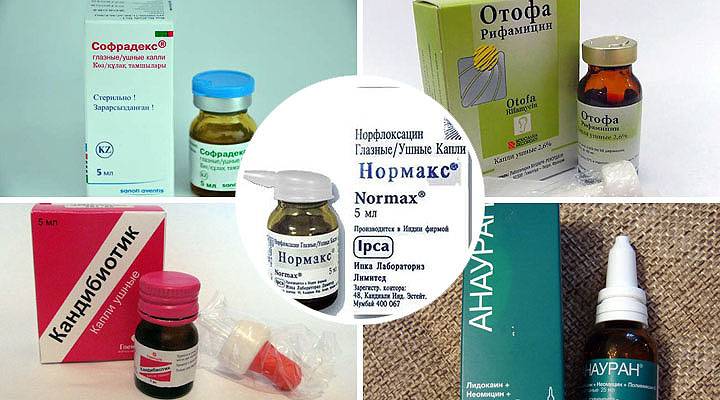 D.
D.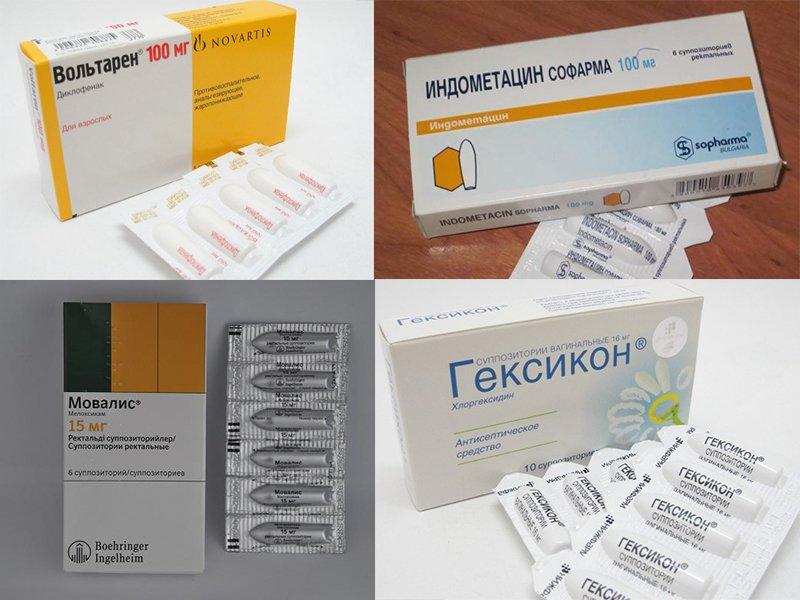 Let’s discuss the details.
Let’s discuss the details. 1 Sinusitis: what is it and how to treat it?
1 Sinusitis: what is it and how to treat it?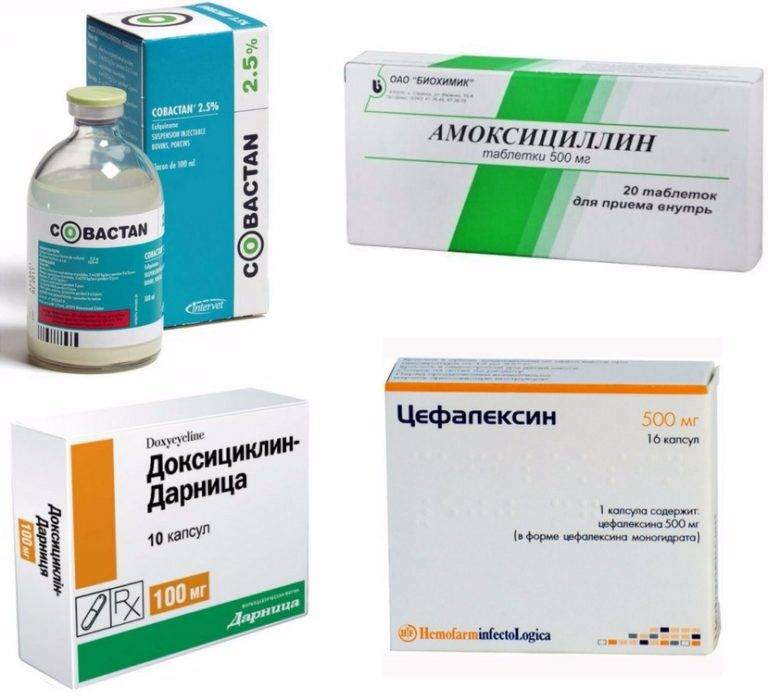 9.4 Side effects Clarithromycin
9.4 Side effects Clarithromycin 15.3 Recommendations Directions for use and contraindications
15.3 Recommendations Directions for use and contraindications

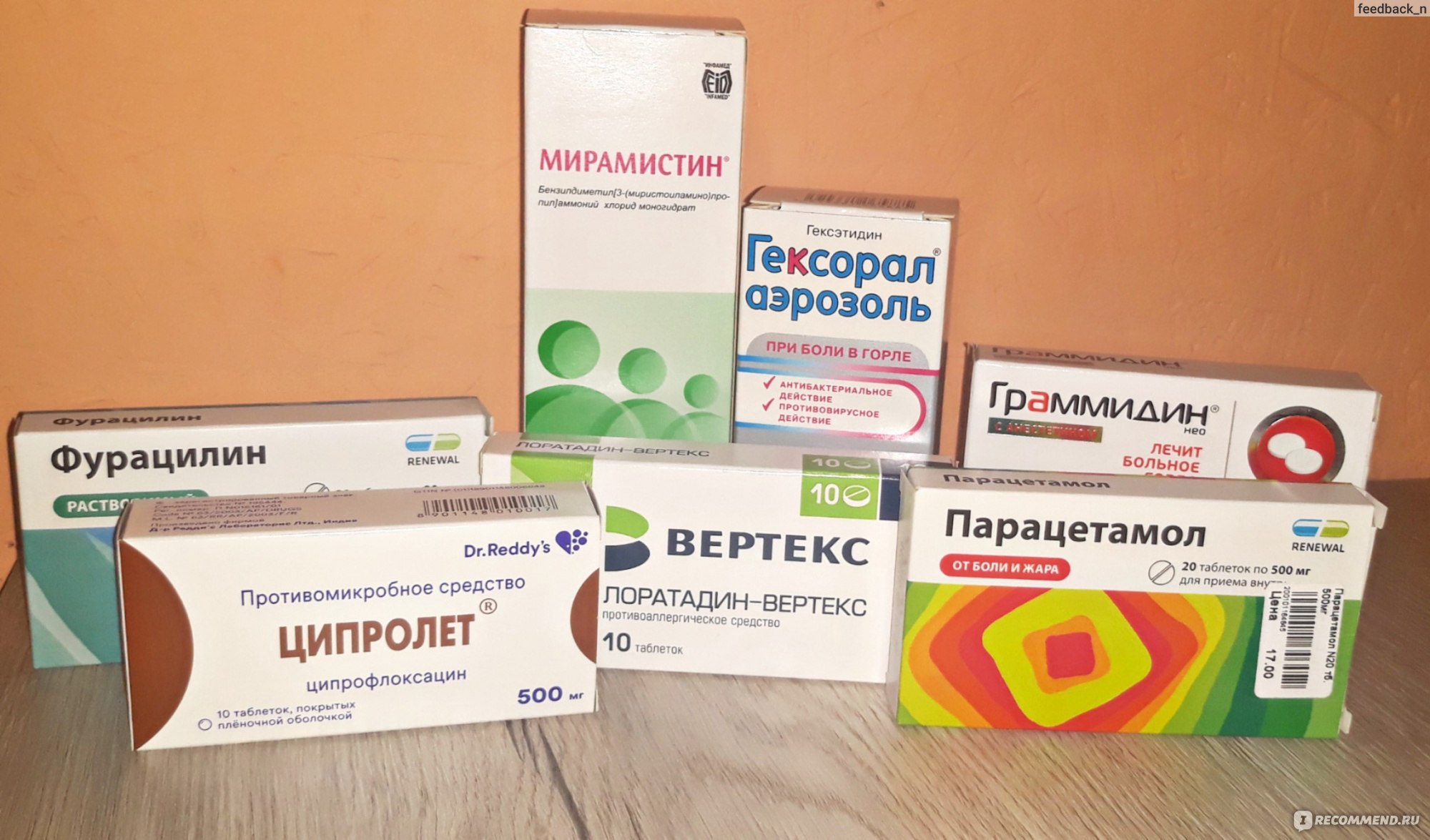 This antibiotic belongs to the class of penicillins and is able to destroy bacteria, which leads to an improvement in the patient’s condition.
This antibiotic belongs to the class of penicillins and is able to destroy bacteria, which leads to an improvement in the patient’s condition.